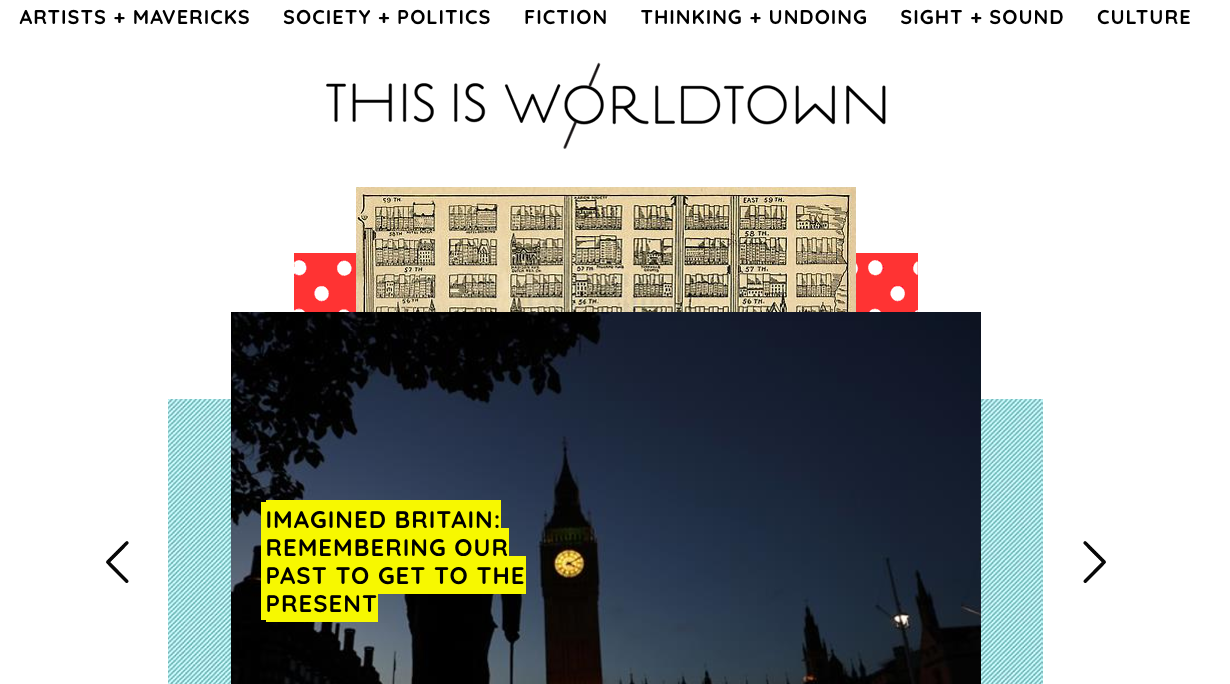This story was funded by the J-Source Patreon campaign.
By Carine Abouseif
A woman waves from the front of a brick-walled room. “Hi,” she says to the crowd in front of her. To her right hangs an iconic piece by Hatecopy, a popular Toronto-based South Asian pop artist. Behind her are two important women in the conversation about race in Canadian journalism — TVO’s Nam Kiwanuka and The Globe and Mail’s Hannah Sung.
Sana Malik, creator and founder of This is Worldtown, is introducing the new media site’s second talk event in its new iteration. The vibrant site, which re-launched in February 2017, is specifically dedicated to telling the stories of women of colour, like the ones who fill the room today.
Much like the venue, the website welcomes the reader in with pops of colour, florals, layered shapes and a message: “Bring your postcards, journals, maps and photographs — leave nothing at the border.”
Those words hint at how the first iteration of This is Worldtown came to be in 2009.
Two years earlier, the Mississauga murder of 16-year-old Aqsa Parvez by her father and brother filled the news.
“It was really horrific,” Malik said. “But the way it was framed, it pathologized that all Muslim men are violent and that people from that background are not acclimatized or don’t want to adapt to the culture. It totally forgot or neglected who she was, and what her life was like, and it didn’t really celebrate it at all.”
For Malik and her friend Ausma Malik (no relation), it was time to act. They had both been student activists, and felt they had to put something online as soon as possible. At the time, Malik explains, most platforms for self-expression that we know today were just budding (like Facebook or Twitter) or didn’t exist yet (like Instagram). Meanwhile, citizen journalism was just beginning to have its moment. It was the perfect time to launch a blog about youth and diaspora.
But a few years into running the blog, or “pinboard,” as she likes to call it, Malik decided to take a step back. She wanted to figure out a clear and deliberate message for the site. She spent the next three years contemplating, planning and working with designers to achieve that exact welcoming vibe.
“It’s very messy and layered,” Malik said of the site’s aesthetic. The main of image of layered postcards is meant to convey the fluidity of borders.
The idea of multiplicity of identity is important to Malik. She describes herself as a third-culture kid — she was born in the U.K. to Pakistani parents, and the family lived between the two places for the first seven years of Malik’s life. “I didn’t feel like I was tied to one home or community,” she said.
At eight years old, Malik and her family arrived in Sydney, Nova Scotia. She described being the only immigrant in her school class in the small city. “I grew up kind of being the only,” she said. “I was the only brown Muslim girl.”
She said she’s often drawn to people in her life who are from a few different backgrounds. That multiplicity, she said, “really comes out in everything I do, I feel, or at least that’s how I try to frame it.”
Both during and after finishing off her undergraduate degree at the University of Toronto, Malik worked in Burkina Faso and Tanzania. The experiences piqued her interest in international development. She also observed how narratives about Africa were framed, and how limited they often were. “They didn’t really show people’s real lives and joy and art and culture and things that made it rich … that really frustrated me,” she said.
Even the name This is Worldtown has a complex origin. Malik remembers listening to rapper and singer M.I.A. “It was the first time I had seen a brown woman reflected in the media, and she was kind of badass and speaking up and saying these things,” she remembered.
Still, as M.I.A sang the lyrics to “World Town,” it felt to Malik like M.I.A was declaring: “I am world town, and I am the third world,” but she wasn’t covering all the things Malik wanted to say. “I just naturally came to this, ‘you wanna talk about world town, this is world town,” Malik said.
Malik said people tend to assume that the M.I.A influence is a positive one. She was a role model, Malik explains, but not exactly.
The nuanced origin story works well with Malik’s desire to make Worldtown a hub of first person stories, despite criticism of the genre. To her, it’s the best way to reach people who are really being affected and being talked about. If you’re not doing that, she said, “we’re not really having any impact.”
Now, the site publishes everything from a reflective essay about the British referendum, to photo series like “Detangling the Root” by Shawntol Drakes, to a story about the artistic recreation of Black Lives Matter Toronto’s Tent City on its first anniversary.
As Malik works to shape these pieces, she’s also spending plenty of time trying to connect with people who have stories to share.
She’s also working on the site’s business model. The team is working on launching a membership drive, as well as considering grant models, private funding and partnerships with existing platforms. In the meantime, the team is hoping to become more global — they already have staff based outside of Canada — as well as focus more on visual storytelling.
Still, Malik’s primary goal right now is to get This is Worldtown’s voice down to something recognizable and make sure people are taking something from it.
“It’s really about people who want to express themselves,” she said, “so I want to make sure that comes out as honestly as possible.”
Carine Abouseif is a freelance writer by day and a copy editor at Pagemasters North America by night. She (occasionally) tweets from @carineabouseif.

